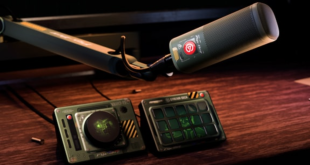Engineers at the University Of Cambridge has developed a new process which can remove toner ink from paper. This ‘unphotocopy' system actually removes the ink from the pages by short laser pulses which heat the printed material, causing vaporisation.
The researchers have said that the process works with commonly used papers and toner ink and is a more eco friendly system than simple recycling. They add that more research will be needed before it could be brought to market however.
The BBC spoke with David Leal-Ayala, the team's lead author who said “When you fire the laser, it hits the thin toner layer and heats it up until the point that you vaporise it.
Toner is mostly composed of carbon and a plastic polymer. It's the polymer in the toner that is vaporised.”
They didn't come up with the idea, according to their study, which was published in The Proceedings of The Royal Society a journal, which was reported on by New Scientist. “Toshiba of Japan already sells a special laser printer/copier (video) that uses a blue toner which can be almost completely erased with heat treatment. David Leal-Ayala and his colleagues at Cambridge have taken the idea a step further, though, with a method that can recover the paper from any laser printed or photocopied document. After testing and ruling out toner removal processes that use mechanical abrasion and chemical solvents, they focused on the most promising method: laser pulses which vaporise toner particles in thin layers until they are no more.
“The key idea was to find a laser energy level that is high enough to ablate – or vaporise – the toner that at the same time is lower than the destruction threshold of the paper substrate. It turns out the best wavelength is 532 nanometres – that's green visible light – with a pulse length of 4 nanoseconds, which is quite long,” Leal-Ayala told New Scientist.
We have repeated the printing/unprinting process three times on the same piece of paper with good results. The more you do it, though, the more likely it is for the laser to damage the paper, perhaps yellowing it,” he says. The team have found toner-paper combinations in which almost no appreciable traces of toner can be seen after lasing and in which the paper suffers “no significant mechanical damage.”
Kitguru says: Useful for the consumer to recycle and reuse paper?
 KitGuru KitGuru.net – Tech News | Hardware News | Hardware Reviews | IOS | Mobile | Gaming | Graphics Cards
KitGuru KitGuru.net – Tech News | Hardware News | Hardware Reviews | IOS | Mobile | Gaming | Graphics Cards



